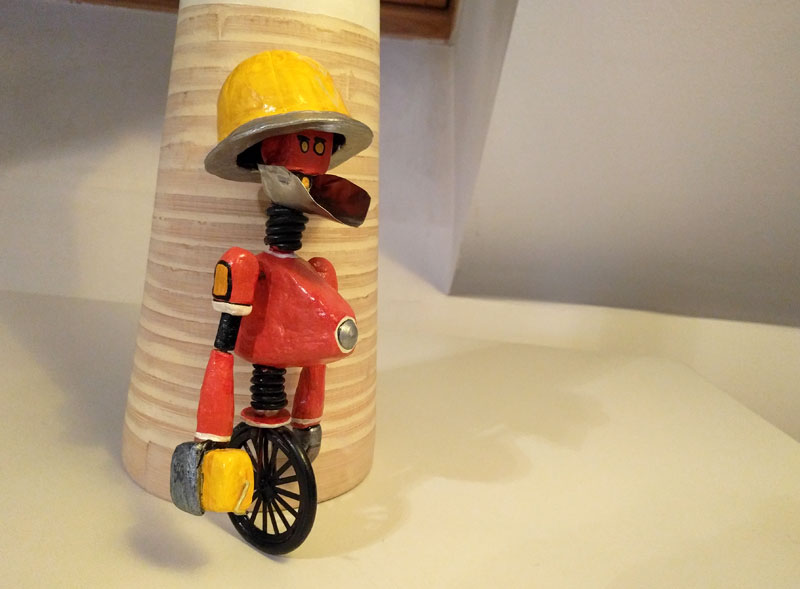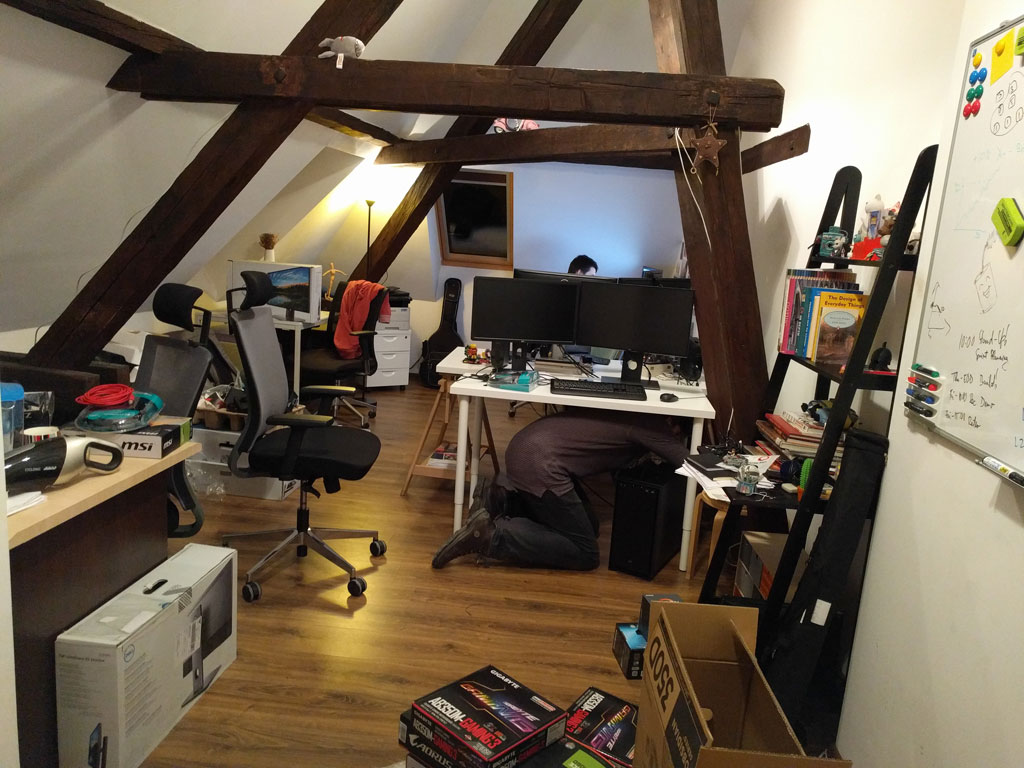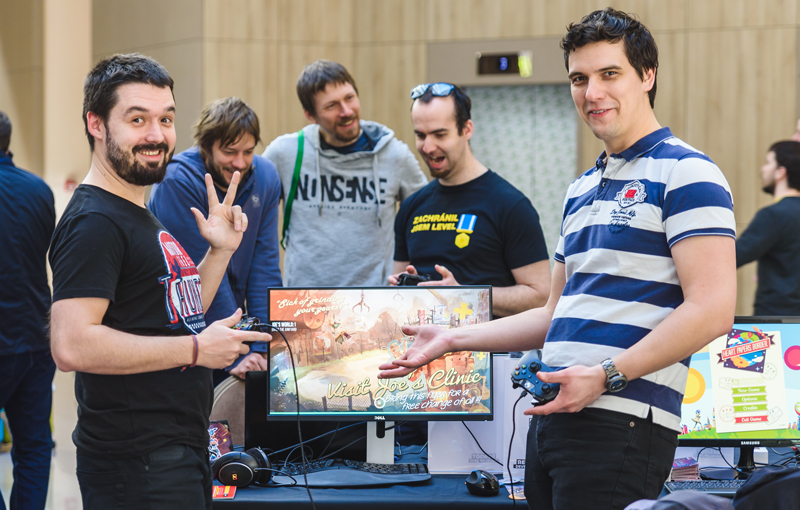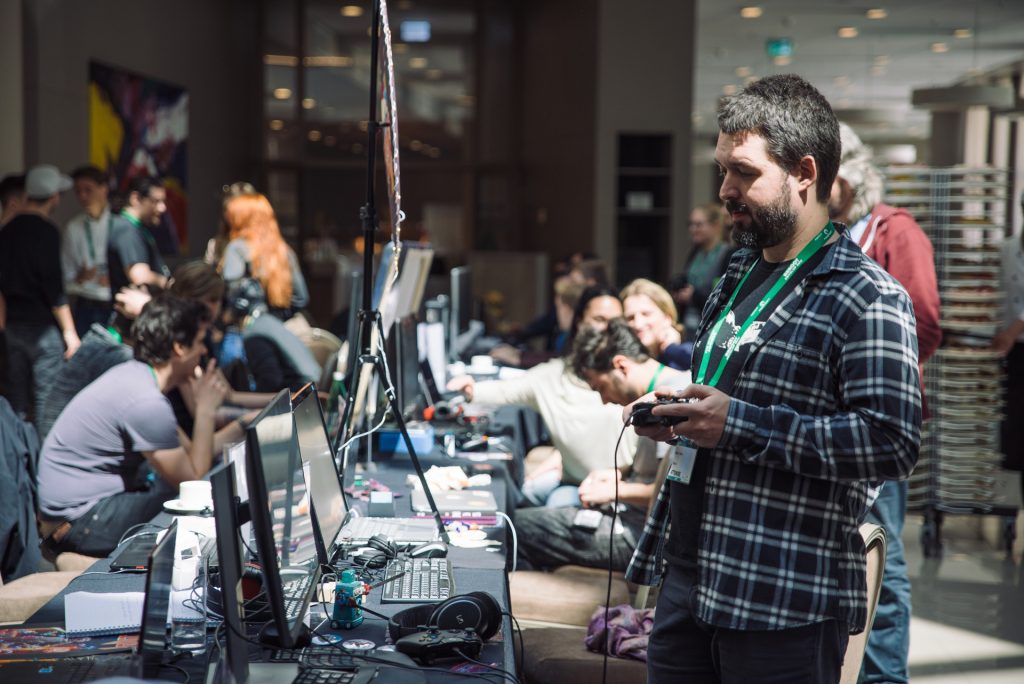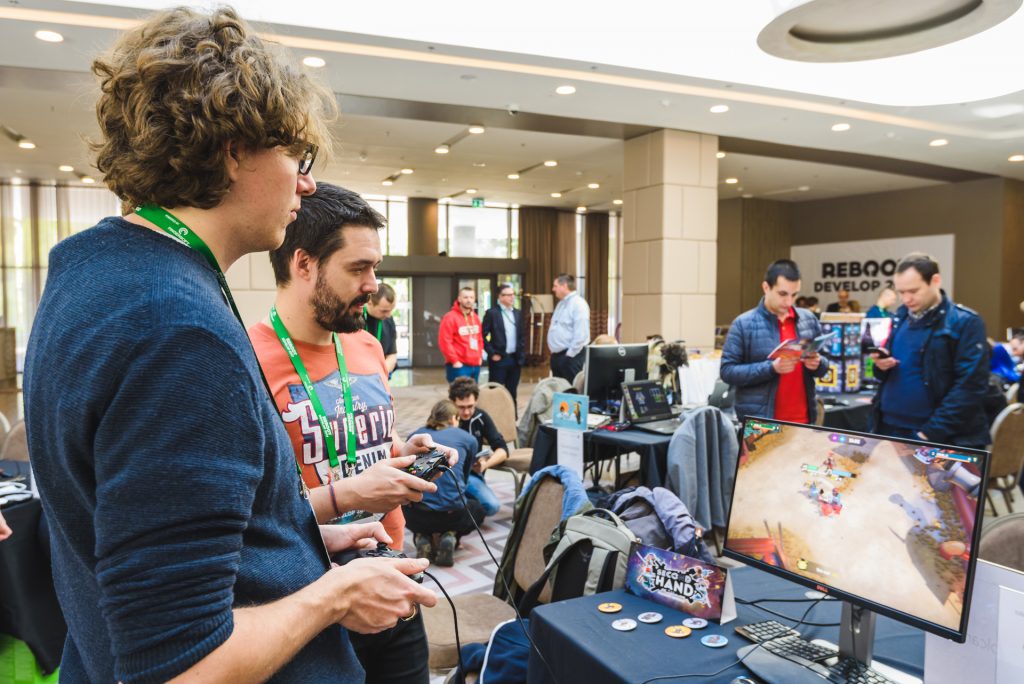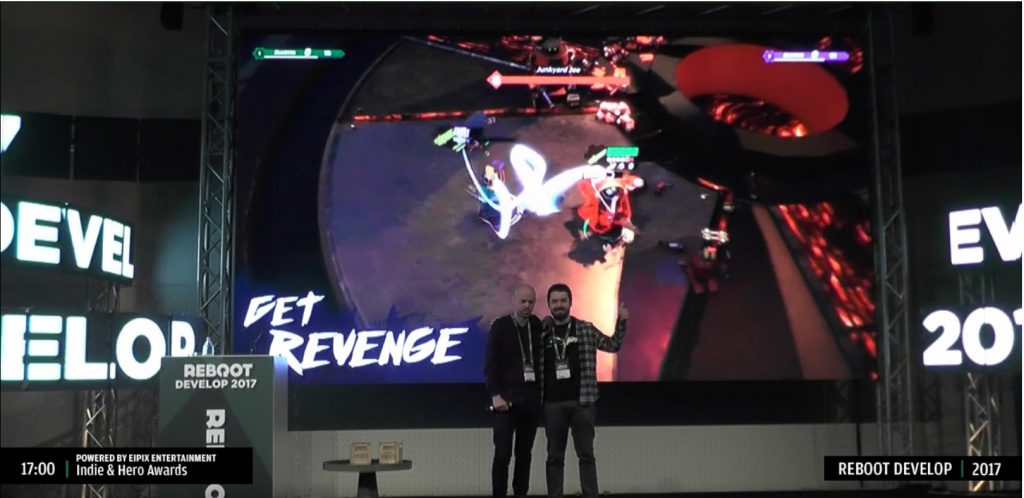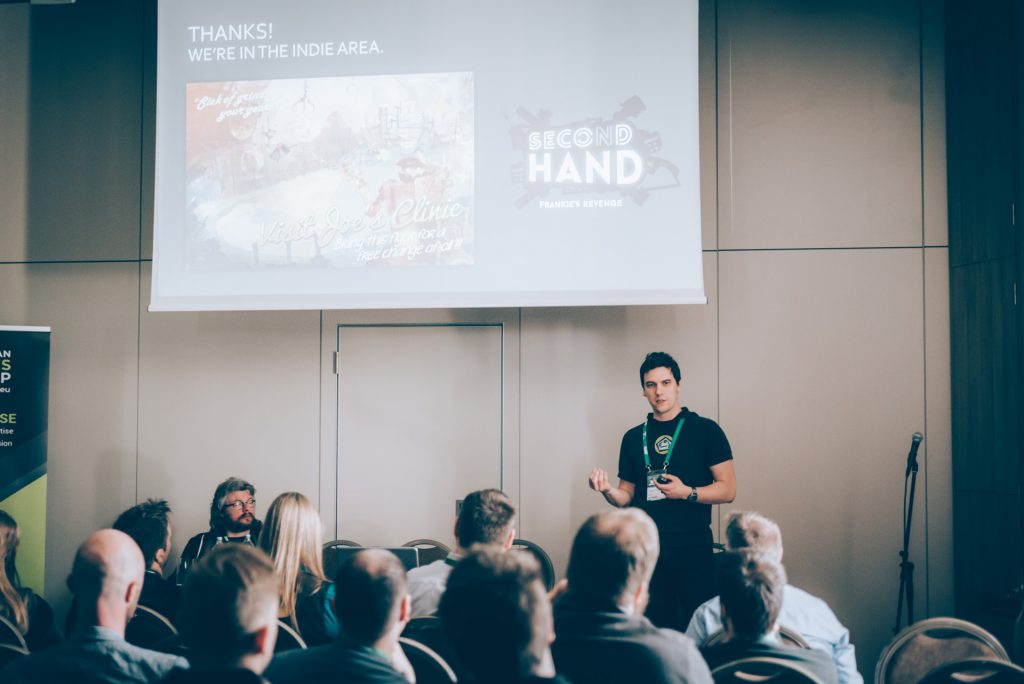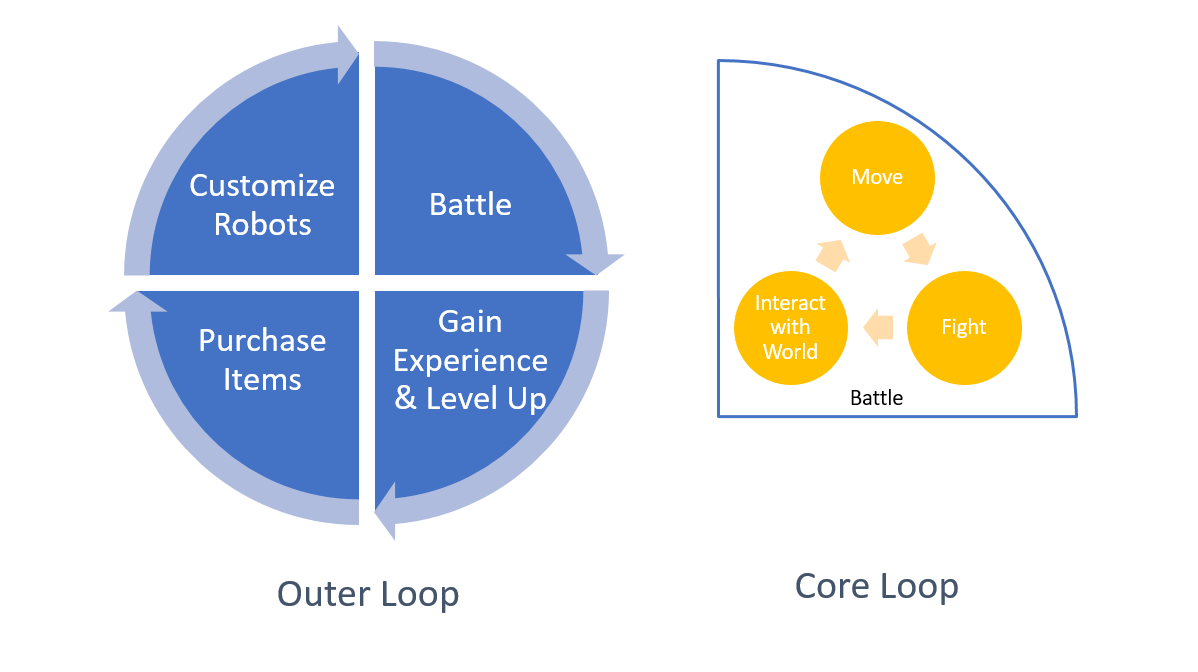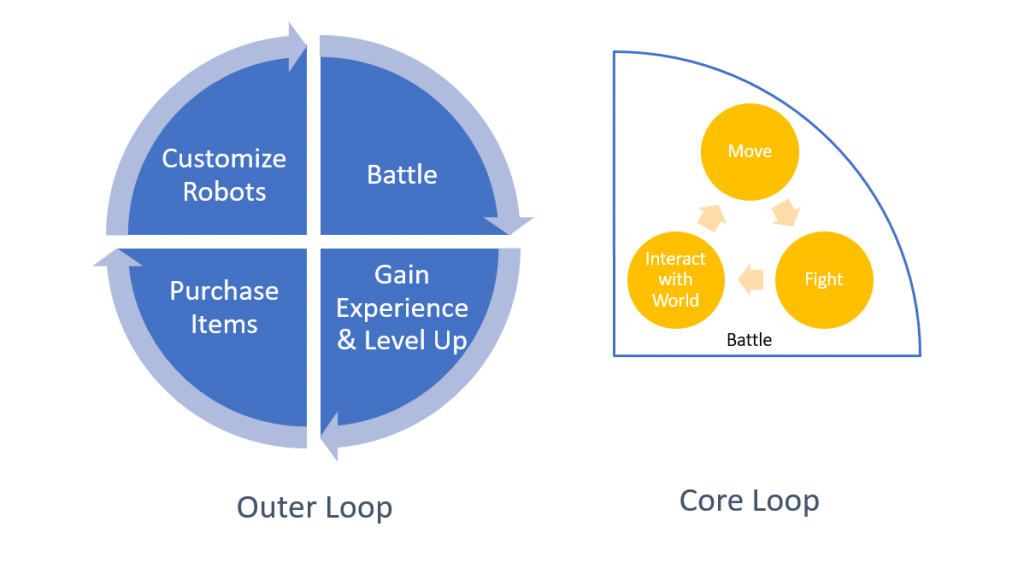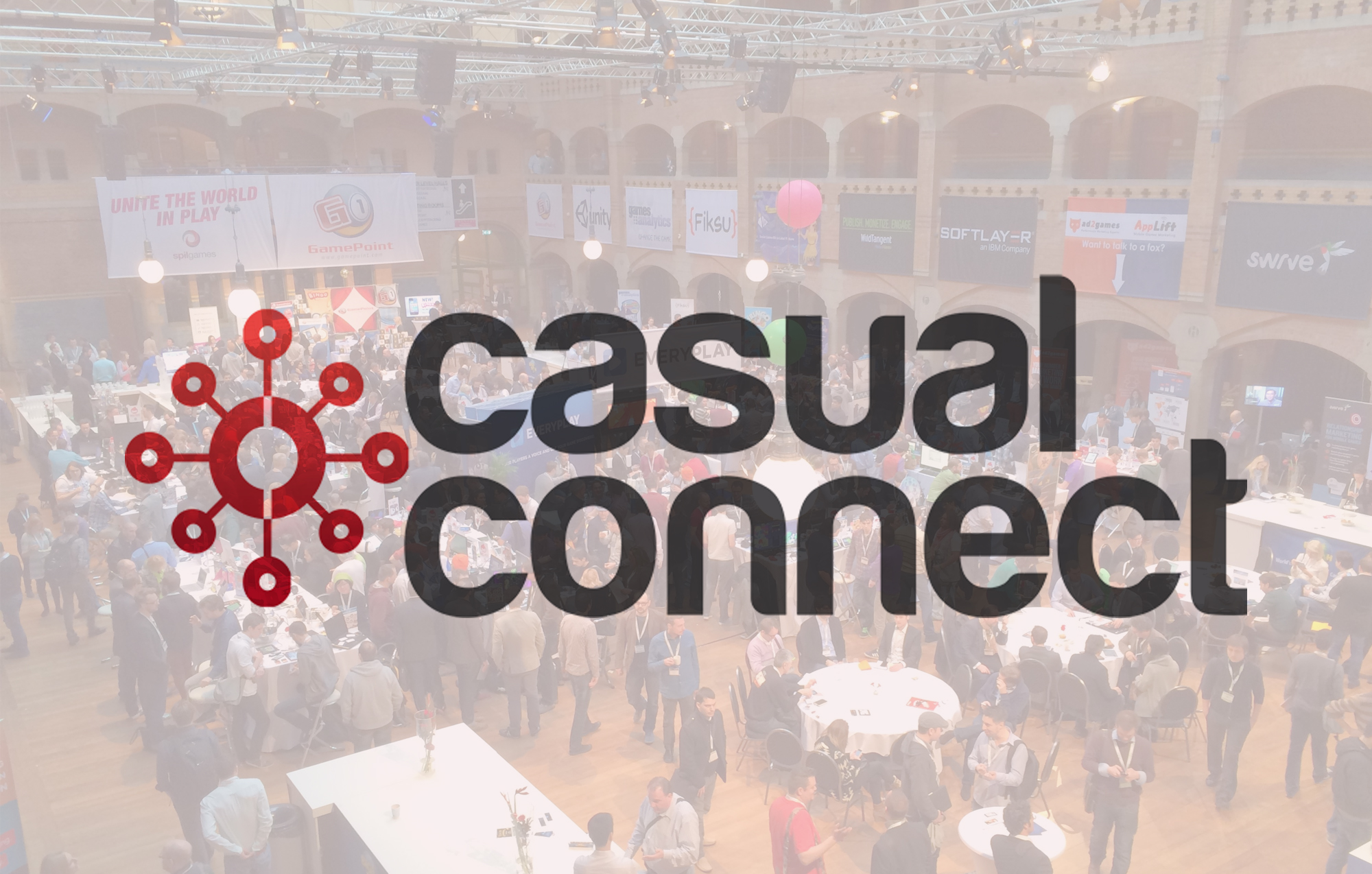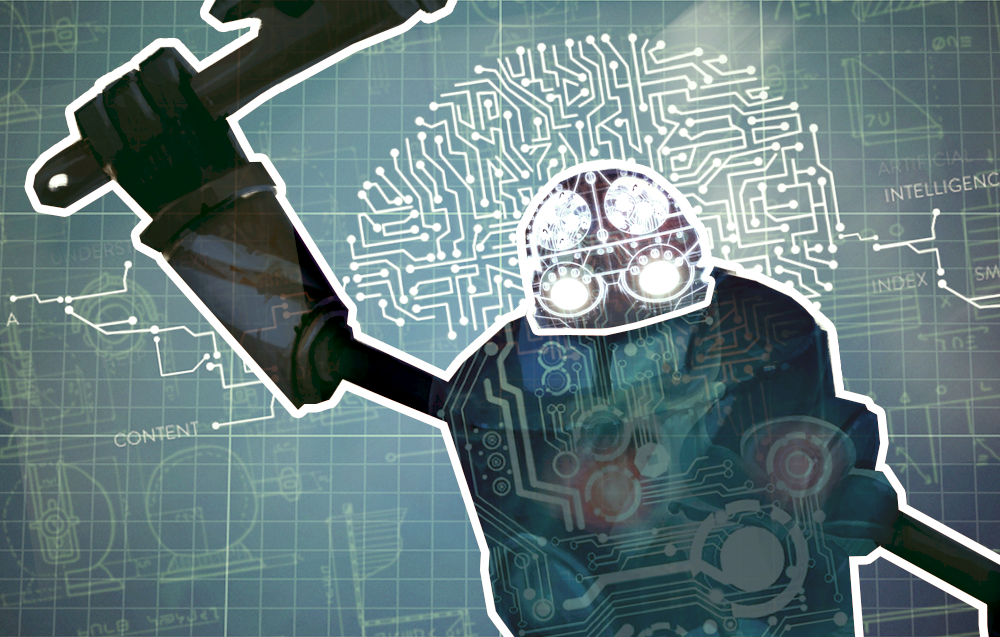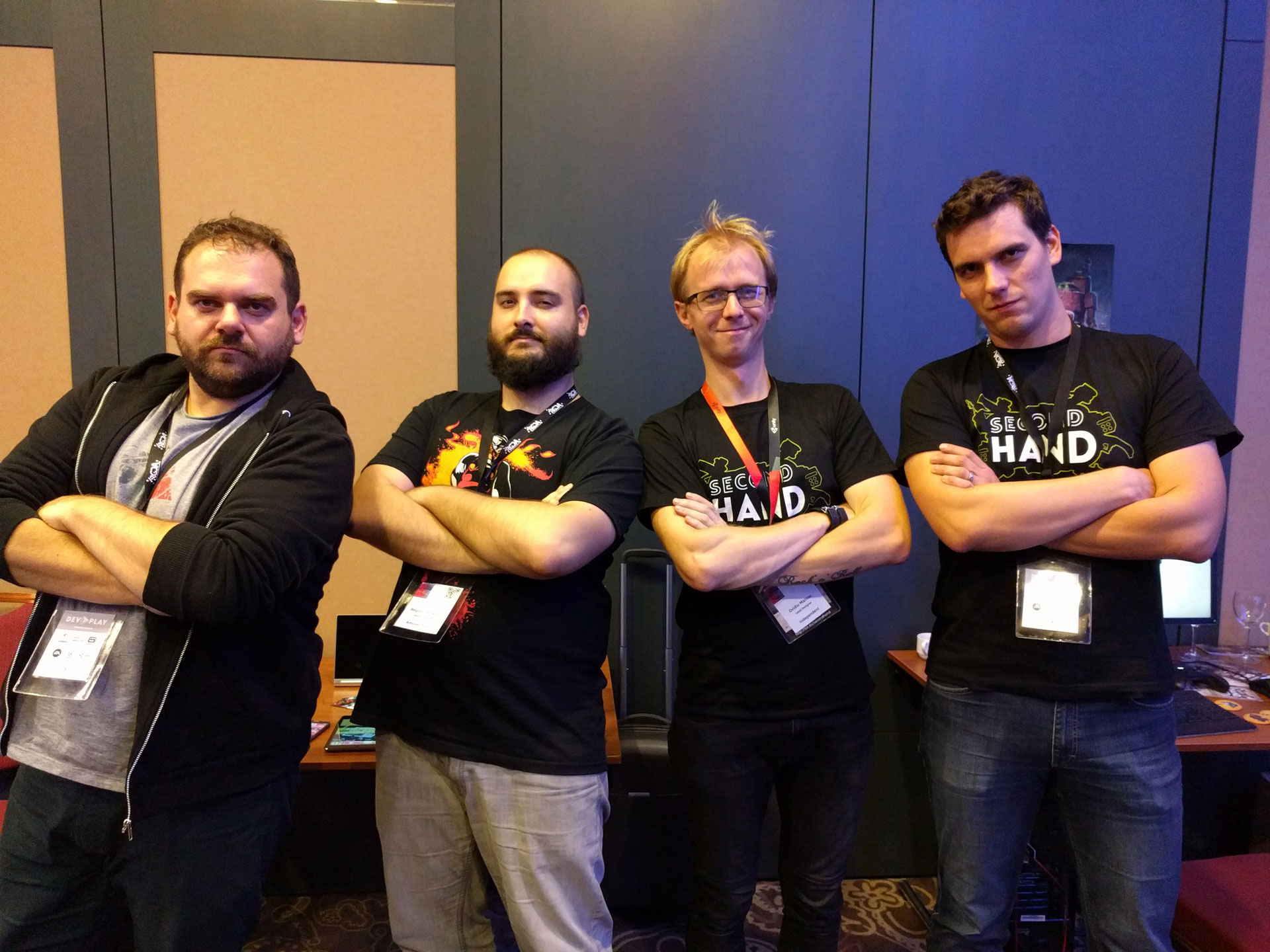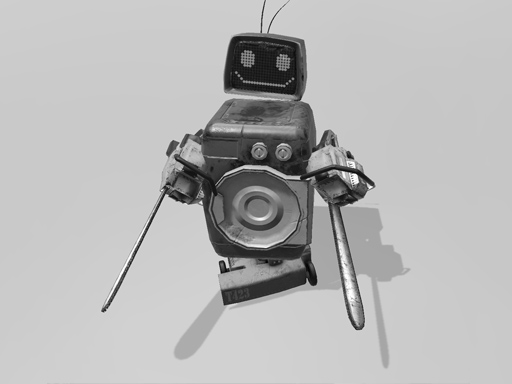Showing your game to strangers for the first time can be a little nerve wracking. After months of toiling in a secluded attic, the last weeks of which were particularly grueling, we finally took Second Hand to its first public showings: first to Dev-Play in Bucharest and shortly thereafter to Clujotronic in our very own Cluj. It was scary, thrilling, amazing and… we won the Dev-Play Indie Pitch!
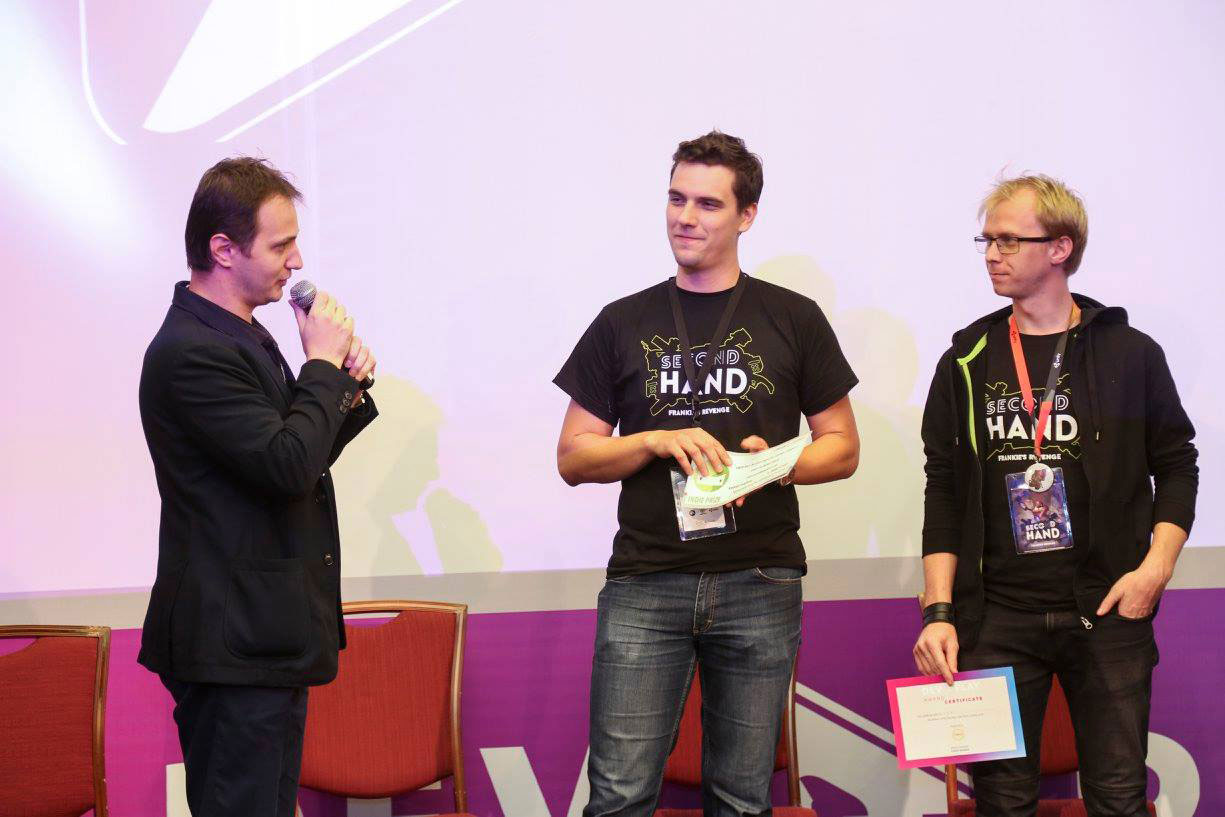
Alex and Ovi receiving the Indie Prize at Dev-Play
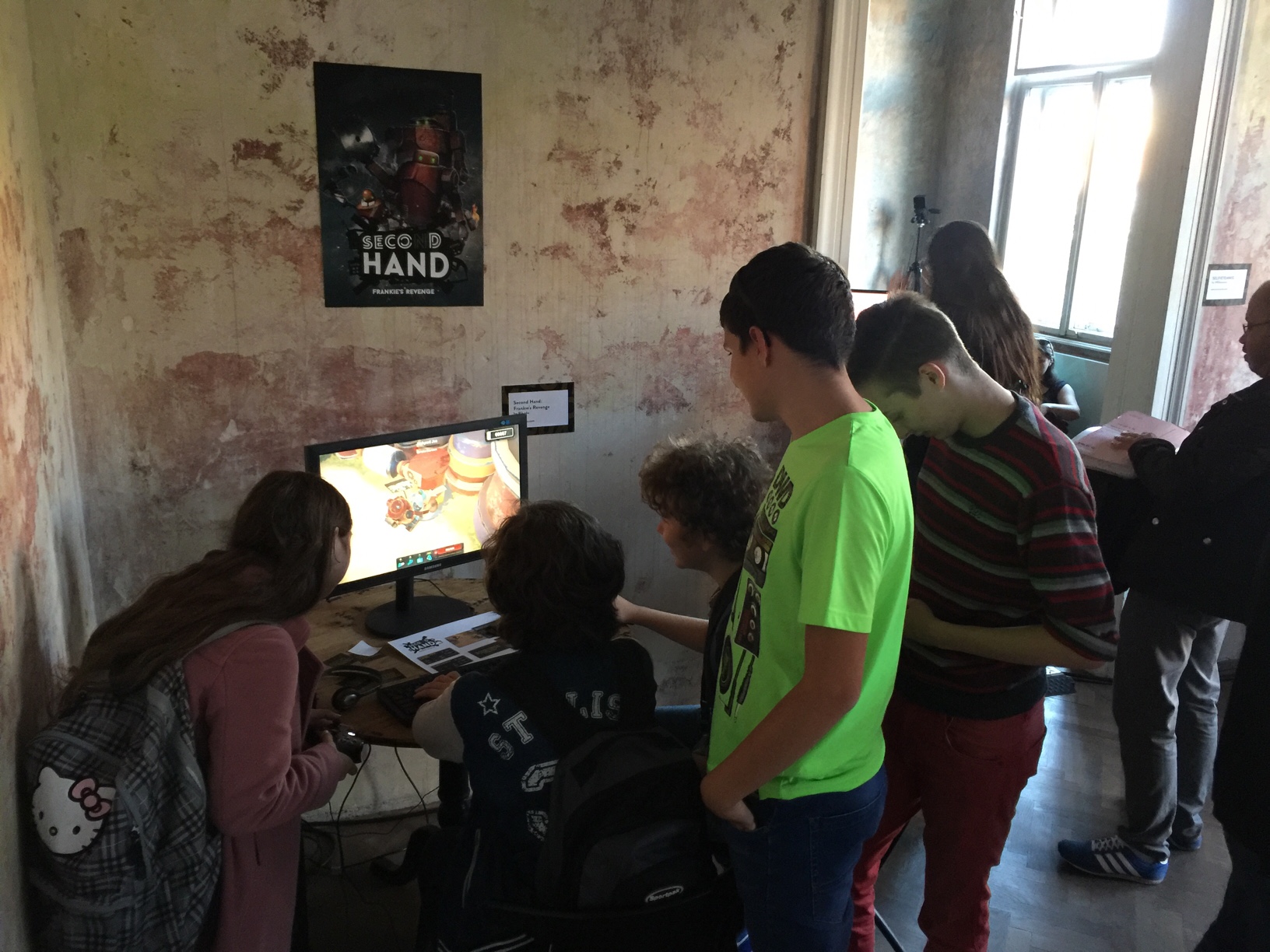
Kids had fun with Second Hand at Clujotronic
In addition to winning this awesome prize (Casual Connect Berlin, here we come!), we found out that our baby is kind of ok looking as far as babies go and learned a ton of things about how to make it better. Read on to get the insights and the words of wisdom.
Before we get into the details though, I’d like to start with a round of virtual applause for the real rock stars, the guys and gal of Team Rikodu who made it all possible.
- Ovidiu Mantoc – Level Design, 3D Art
- Gabriel Tanko – Concept and 2D Art
- Cosmin Coroiu – 3D Art
- Carmen Palade – Animation
- Radu Cristea – Programming
- Stefan Dinca – User Interface
- Dragos Geomolean – Additional 3D Art
- Nikolaos Chatzigeorgiadis – Marketing
Nearly everyone does this in their spare time, so it was no small effort to get this thing out the door. I’ll spare you more praise and flattery because I honestly suck at it but I will say this: Guys, you rock!
What we learned about the game
The feedback about the game was better than we could have hoped. Everyone was very positive and I was stoked that many of the people who played our game at Dev-Play – mostly industry peers – said that they saw a lot of potential. Color me excited!
People liked the game but there was also useful feedback (and observation) of where we can improve. In no particular order:
1. Still too much clicking required
Yeah, we kinda knew this one already but it was even more evident as people played. The game still requires constant clicking, even more than Diablo, and this is something we’ll have to solve.
2. We got the pacing and distribution of the enemy waves completely wrong
It was funny when I saw this for the first time. Here’s the scenario: the player enters a new “zone” but doesn’t really know that because there’s no clear indicator. This triggers enemies to start spawning at a predefined rate and in a predefined sequence. Everything would work out as designed if the player started fighting in the new area but of course players will surprise you.
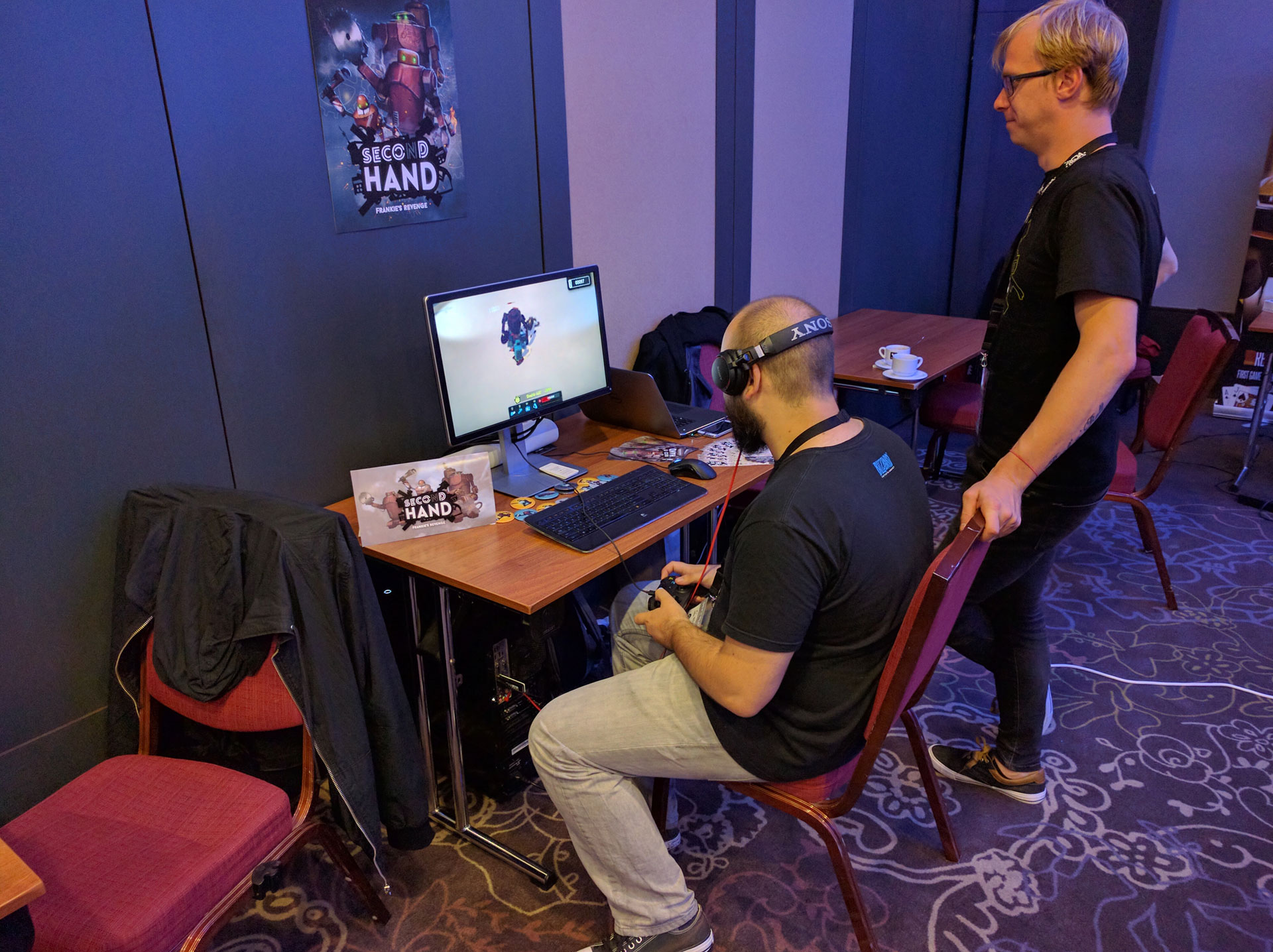
This dapper fellow thinks there’s too much clicking.
Many players backed away after seeing the first enemy, luring him away and then killing him. They would try to draw and kill enemies one by one with surprising consequences. The predefined spawning sequence would run in the background and enemies would just keep spawning in the room that was now out of view. This ensured that by the time the player got back from killing 1-2 enemies, there would be an entire horde chasing her down.
Fun stuff, needs fixing.
3. Some things need a tutorial no matter how hard you try
The “service stations” where you enter to recharge your health and get a new Frankie configuration are very important. They’re a temporary solution until we implement actual customization but we really wanted players to see and use them. We saw players zooming past them early on (before Dev-Play) and we tried a bunch of things: make them a different color, put a huge neon sign that says ENTER, add a light to draw the eye. At some point we even had them painted in bright fuchsia.
You’d be wondering if it worked if I hadn’t already spoiled the answer. Yeah… no luck. Players were still happily zooming past and we had to constantly point them out. Teaching is in order.
4. Balancing the difficulty for a wide range of players will be a bitch
Some people finished the demo level in 4-5 minutes. Or, in the case of Josh Naylor from Unity, he did an almost flawless run in roughly 3 minutes on his third try. That’s better than most of the devs who worked on it! On the other end of the spectrum, some people took 3-4 tries just to finish it or couldn’t finish it at all.
Did I mention the aiming? Oh god, the aiming! It was excruciating to see some people just not aim at all and stick to using the attack controls. Turns out that if you’re not a hardcore gamer, it’s pretty challenging to move, aim and shoot independently.
Yeah, this is gonna be fun!
What we learned about showcasing
Both Dev-Play and Clujotronic were just amazing because we got to see people play our game. At Clujotronic we were even a part of this crazy, live gaming thing where an electronic band (Crowd Control) played live music while Ovidiu played the game and had it projected on the walls. Very trippy stuff!
So really the main lesson is old and tired: show your game! Show it early to strangers, don’t be afraid they’ll say it’s ugly. You’ll learn so much and it will be better as a result.
But there are a few more lessons for the would-be conference trekker.
1. Meeting other indie devs is really cool. You connect with like-minded people and get a ton of great ideas. Totally worth it just for this. Here’s a photo of Disco Dave and Second Hand: Frankie’s Revenge representing Cluj and being all gangsta. Except for Ovi; he can’t pull gangsta.
2. Moving from full-on development to showcasing your game is a huge shift. You’re working in a bubble for 12 hours a day to get that last build ready for the demo and then suddenly: BOOM! You’re talking to people, seeing others play it, watching talks, participating in workshops, maybe even giving some yourself. Not really a lesson just more of a “be prepared” kind of thing.
3. If you’re setting up a booth, always have a spare extender (thanks Eni). Seriously, I would not have thought this could be a problem but it was. Tape also helps and a spare laptop doesn’t hurt. The desktop that was intended for the showcase almost gave its dying breath when we set it up.
What’s next?
The dust has settled and our energy bars are maxed out. SH:FR is now entering a new phase!
For one, we will be heading to Casual Connect in Berlin to take part in the Indie Prize. That’s due in February though so there’s plenty to do until then. For the game itself, here’s what’s coming up:
- Multiplayer! The biggest feature request by far, we really want to add cooperative multiplayer into the mix and test it out as soon as possible.
- Fix the problems we identified during the playtest.
- Make the demo bigger and better. This means adding a couple of more enemy types, improving some of the existing parts and adding ranged weapons!
- Paint a picture of the final game. The demo achieved its goal by proving that combat is fun and people like it. While combat is central to the game, we need to design and think about all the other details. How many levels? Where do they take place? What’s the overall story? Many questions will be answered as we try to design the complete experience.
I’m pretty sure we’ll be doing some more playtests in the near future. And yeah, we might even attend a conference or two before Casual Connect, strictly as attendees this time. Meanwhile, here’s a photo of the trippy live gaming gig:
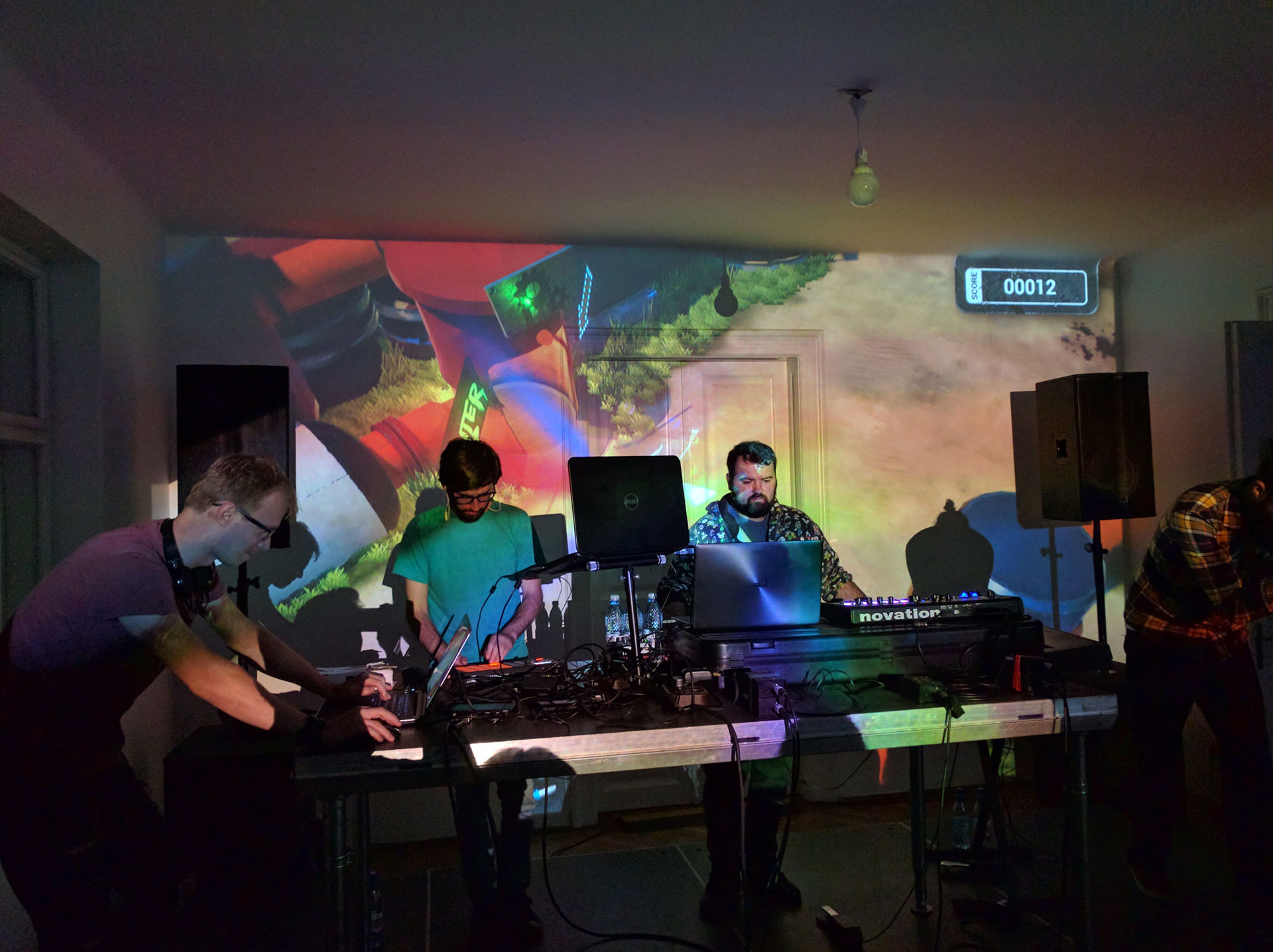
Thanks Dev-Play, thanks Clujotronic. Hope to be there again next year!
Sailing on the netherplanes,
~Alex
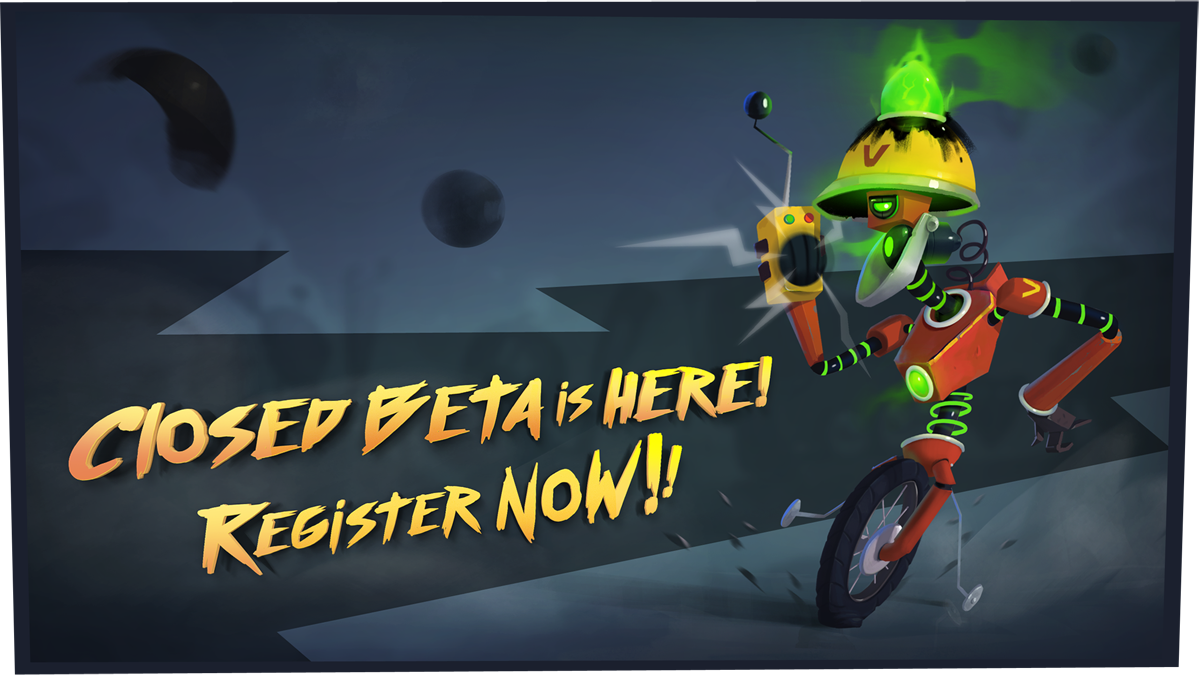
 This has been a long time coming but we are finally ready. The beta starts in early March (first or second week, depending on how fast we can squash the remaining bugs) and will be running for a few weeks.
This has been a long time coming but we are finally ready. The beta starts in early March (first or second week, depending on how fast we can squash the remaining bugs) and will be running for a few weeks.

